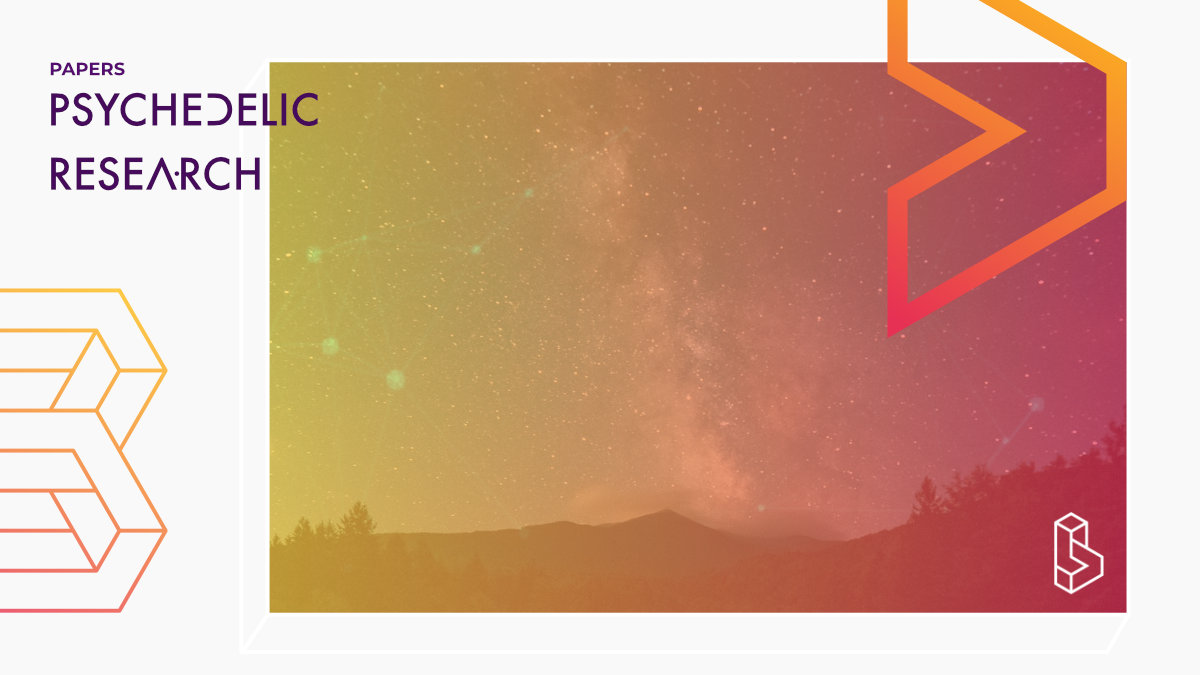This comprehensive review (1985) of the literature on psychedelics and creativity spans most of the research that had been done before the doors of perception were shut for 40 years.
No abstract is provided for this paper.
Author: Stanley Krippner
Notes on Psychedelic Drugs and Creativity
The paper is very good overview of the studied that had been done up to that date. Here are things that stood out:
- Only nine (pilot) studies had been done on psychedelic drugs and creative performance
- Berlin and colleagues (1955) asked painters to paint whilst on mescaline which produced works of art that had “greater aesthetic value”
- Barron (1963) found his subjects (creative individuals) to be engaged under the influence of psilocybin, but some saying judging afterwards that the work was not inspiring
- Janiger (1967, 1959) asked 60 prominent artists to paint a picture of an American Indian doll, which were judged as more imaginative but of lower ‘craftsmanship’
- Leary (1963) gave LSD to 65 writers who also responded positively
- Fischer, Fox and Ralstin (1972) gave psilocybin to 21 college-age volunteers and reported on a measure of brain damage (“one’s brain damage is another person’s creativity”)
- McGlothlin, Cohen and McGlothlin (1967) reported on 72 graduate students who were given LSD who showed no changes on creativity tests at two weeks and six months later
- Zegans, Pollard and Brown (1967) found that 30 graduate students did better than the control group on word associations, but no other significant results were found
- “[LSD] may increase the accessibility of remote or unique ideas and associations while making it difficult for subjects to narrow their attention on a delimited perceptual field.”
- Harman and colleagues (1966) found that professionals could get more work done and their fluency of ideas went up significantly
- They were given mescaline (200mg) and methylphenidate, also known as Ritalin, so unfortunately contaminating the experiment quite a bit
- And I don’t know how much Fadiman, one of the co-authors, mentions the latter in The Psychedelic Explorer’s Guide (as far as I can see it isn’t mentioned at all)
- Krippner (1977, 1970b, 1969) took a survey of artists (180) and musicians (27), many of which agreed with his definition of them being a psychedelic artist
- “Some (<10%) didn’t do psychedelics but got to the same state in a different way
- Of the artists surveyed, 131 said that there had been a noticeable improvement in their artistic technique resulting from their psychedelic sessions: A greater ability to use color was the example mentioned most frequently
- Of the artists, 142 attributed a change in their creative approach to the psychedelics.
- In conclusion, this author’s interviews indicated that very few artists and musicians created or performed during a psychedelic experience. However, most of those interviewed felt that the experience itself had been of artistic value.”
- And in conclusion, “What is more typical is that the creative person uses the psychedelic experience as raw material for an eventual painting, composition, poem or invention (Ebin 1961)”
Summary of Psychedelic Drugs and Creativity
The use of drugs to facilitate creativity has a long history. Stone sculptures from 1500 B.C. depict hallucinogenic mushrooms from whose stems emerge the heads of gods.
The physician Samuel Hahnemann claimed that the mushroom Amanita rnuscaria heightened poetic abilities, the neurologist S. Weir Mitchell rhapsodized on the properties of peyote, and William James tried the cactus buds and became nauswus.
LSD has been utilized in a psychotherapeutic session to facilitate creativity. Ramona Davidson, a pseudonym, participated in an LSD-assisted intervention, and nine months after the session, she was able to terminate nearly three years of psychotherapy, had obtained a promotion in her work, and reported improved relations with her husband and children.
Find this paper
Psychedelic Drugs and Creativity
https://doi.org/10.1080/02791072.1985.10524328
Paywall | Google Scholar | Backup | 🕊
Cite this paper (APA)
Krippner, S. (1985). Psychedelic drugs and creativity. Journal of Psychoactive Drugs, 17(4), 235-246.

